|
Displaying items by tag: Russia
The court case begins today in Amsterdam to determine the future of a collection of gold, precious gems, a ceremonial helmet, and other treasures from the Black Sea region. Four different museums in Crimea are taking legal action to force the Allard Pierson Museum in the Netherlands to give back treasures in an exhibition entitled, The Crimea: Gold and Secrets from the Black Sea, loaned before Russia annexed the Ukrainian territory. The Netherlands does not recognize the Russian annexation of Crimea.
Russia has blocked Sweden from borrowing Marc Chagall paintings for an upcoming exhibition of the artist's work, the Millesgarden Museum in Stockholm said Thursday, following a diplomatic dispute between the two countries.
Museum curator Onita Wass told AFP that the museum has been forced to cancel the exhibition of 48 works by French-Russian artist Chagall and several of his contemporaries.
"We worked in cooperation with the State Russian Museum in St. Petersburg to put together an exhibition on Marc Chagall and the Russia of his time, but the culture ministry didn't permit us to borrow the works... forcing us to cancel the exhibition," said Wass.
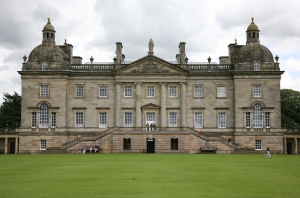
A new exhibition sponsored by BP will bring over 70 masterpieces back to the UK after 234 years. The paintings, which originally hung at Houghton Hall in Norfolk, England during the 1720s, were part of Britain’s first Prime Minister Robert Walpole’s collection. The exhibition includes works by Sir Anthony Van Dyck (1591-1644) and Rembrandt (1606-1669), which will hang in their original positions in Houghton Hall.
The show opens on May 17, 2013 and has been met with some criticism. Many of the works on view are on loan from the Hermitage Museum and other Russian institutions as well as the National Gallery in Washington, D.C. and the Metropolitan Museum of Art in New York. Critics feel that BP’s involvement is meant to benefit its relationship with Russia and that the company chooses its sponsorship events based on business rather than its interest in the art.
After Walpole’s death, his illustrious collection was sold to Russia for $61,355 and was sent from Britain 1779. Houghton Hall is currently owned by Walpole’s descendants and contains the furniture, bronzes, and antiquities that once belonged to the former Prime Minister.
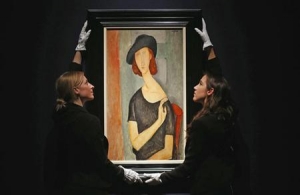
The success of Sotheby’s and Christie’s Impressionist, Surrealist, and Modern sales in London this week is proof that the demand for such works is on the rise. On February 6, 2013 Christie’s brought in $214 million worth of sales, just one day after Sotheby’s evening auction garnered $228 million.
The top lot at Christie’s was Amedeo Modigliani’s (1884-1920) portrait of his common-law wife titled Jeanne Hebuterne (au chapeau) (1919). The work, which was completed just one year before Modigliani’s death, sold for $42.1 million to one of Christie’s Russian-speaking client services representatives, who was bidding on behalf of a client. The work significantly surpassed its high estimate of $34.5 million.
Other major sales from Christie’s auction included Rene Magritte’s (1898-1967) landscape Le plagiat (Plagiary) (1940), which sold for nearly $8.2 million, Pablo Picasso’s (1881-1973) Nu accroupi (1960), which went for $11.4 million, and Pierre-Auguste Renoir’s (1841-1919) L’ombrelle (1878), which garnered $15.2 million.
With 89% of lots sold, the sale was a record in the Impressionist, Surrealist, and Modern category by Christie’s in February in the UK.
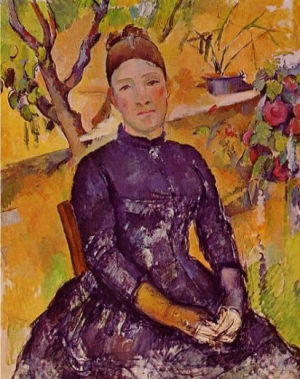
In December 2010, Pierre Konowaloff, the heir to Russian art collector Ivan Morozov, filed a lawsuit claiming that he was the rightful owner of Paul Cézanne’s (1839-1906) painting Madame Cézanne in the Conservatory (1891), not the Metropolitan Museum of Art. Konowaloff explained that Morozov’s art collection was seized by the Bolshevik regime in 1918 and that when Stephen Clark, the collector and museum trustee who bequeathed the work to the Met in 1960, first bought the painting from Knoedler & Company in 1933, he did not carry out due diligence. Accusing the Met of wrongful acquisition, possession, display and retention, Konowaloff demanded that the work be returned to him and requested restitution for monetary damages.
On December 18, a judge in the 2nd District Court of Appeals in Manhattan ruled that the Met could keep the Cézanne masterpiece, as the museum remains the work’s rightful owner. The Met has stood behind their right to the painting since the beginning of the entanglement with Konowaloff. The lawsuit was initially dismissed in 2011 by judge Shira Scheindlin who said that a U.S. court has no basis for questioning a decision made by a foreign government on distant soil. After the rejection of Konowaloff’s appeal, Met officials can finally leave the dispute behind them.
Konowaloff filed a similar suit against Yale University in 2009 over Vincent van Gogh’s (1853-1890) The Night Café (1888). Konowaloff claimed that the van Gogh painting was also stolen during the Russian Revolution and bought by Clark regardless of its questionable history.
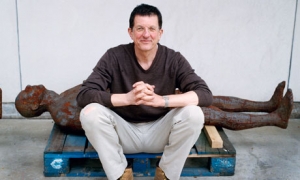
Sculptures by Henry Moore will be brought by crane into the heart of the Kremlin next Spring, while works by Antony Gormley will be shown at the Hermitage in St Petersburg, and there will be the first exhibition in Russia of work by the visionary poet and painter William Blake at the Pushkin museum.
The peace-making loans from the UK are announced Monday by the British Council to coincide with the visit of David Cameron. They represent a remarkable thaw in cultural diplomactic relations. They will mean major Russian exhibitions in Britain, including one on Catherine the Great, coming next year from the Hermitage to the newly expanded National Museum of Scotland.
Just four years ago the British Council was ordered to close its offices outside Moscow. The move was widely seen as having nothing to do with claim by the Russian authorities that the council was operating illegally in breach of tax regulations and everything to do with the collapse in relations between the two countries following the murder of Alexander Litvinenko and Britain's expulsion of Russian diplomats.
Now peace has broken out again. Martin Davidson, chief executive of the council, said: "I am delighted that the visit of the prime minister to Moscow has led to this initiative. The cultural and educational relationship with Russia matters – in both directions – and this agreement is a huge boost to collaboration between our two countries."
He added that cultural connections "build trust, and trust underpins trade".
The new warmth in relations has already borne fruit. When Andrea Rose, head of exhibitions at the council, met the head of the complex of museums within the medieval walled fortress of the Kremlin to discuss the Henry Moore exhibition, she commented on her unusal name. Elena Gagarina, director of the Kremlin museums, is indeed the daughter of the first man in space, Yuri Gagarin, and the outcome of their conversation was his statue which now stands outside the British Council offices on the Mall in London – a gift from the Russian Space Agency.
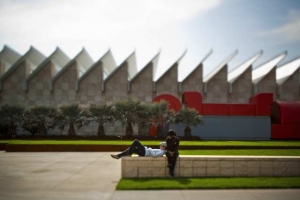
The Los Angeles County Museum of Art has bid dasvidaniya to about 30 artworks that Russian authorities had promised as loans to "Gifts of the Sultans: The Arts of Giving at the Islamic Courts," then withheld. Russia has imposed an embargo on all loans to American museums in a display of its displeasure over a U.S. legal decision that has nothing to do with art or museums.
That has left LACMA curators and exhibit installers to practice the art of improvisation as they rejigger the show's layout to avert any discernible voids in the presentation when the show opens Sunday with more than 200 other objects from the museum's own collection or loaned by a wide array of non-Russian sources.
One of the artworks, an 18th-century Turkish tent embroidered in silk and gold that had been a gift to Catherine the Great and now belongs to the State Hermitage Museum of St. Petersburg, was to have served as the centerpiece for the show's largest section. Like its companions from the Hermitage and two other Russian collections, it is being held hostage in a standoff involving the Russian and U.S. governments and Chabad, a prominent branch of the ultra-Orthodox Jewish Hasidic movement.
Last year, Chabad won a court victory when a federal judge in Washington ordered Russia to return vast troves of religious books and rabbinic manuscripts seized during the Russian Revolution and World War II. Chabad originated in Russia in the 1700s and was transplanted to the United States during the 20th century.
The Russian government contends that it is not bound by U.S. court decisions concerning what it considers to be its own property.
Consequently, the Houston Museum of Natural Sciences suffered the loss of "Treasures from the Hermitage: Russia's Crown Jewels," which was to have opened last month, "Treasures from Moscow," a show at the Museum of Russian Icons in Clinton, Mass., was shut down in March when orders came for the exhibition to be sent home, and Russia has reneged on loans to the Getty Museum, the Metropolitan Museum of Art and the National Gallery of Art, among others.
The 'Sobranie.Photoeffect' fund, created by fund managers Agana, comprises nearly 300,000 original prints by 250 domestic and foreign photographers and is worth a combined $467 million.
The fund, partly made up of Soviet Union collections with the potential for adding contemporary Russian photographers, will target foreign investors in the Russian market offering a safe "investment money shelter," said Ekaterina Aleksandrova, Agana's deputy director general.
The portfolio included photographs of Russia's Tsarist family, the Romanovs, as well as early paparazzi shots of Italian actress Sophia Loren.
"Art investment has proven over a century to be reliable, profitable and not volatile. Art indexes have been growing faster and falling slower than stocks in the S&P 500 index in past decades," Alexandrova said, adding that the 2008-09 financial crisis only affected sale volumes, not prices.
|
|
|
|
|